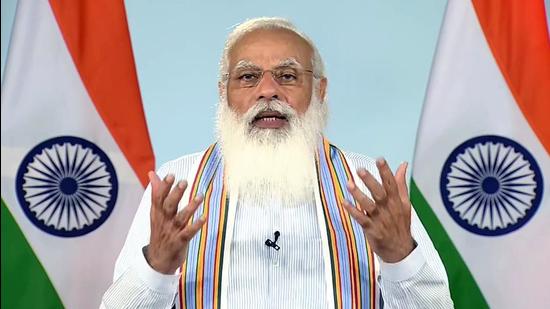On China, Modi returns to the Indira era

China is a greater power than India. New Delhi’s perennial concern is managing this fact. India has typically taken two routes to manage the power gap — the Jawaharlal Nehru approach and the Indira Gandhi approach.
Beijing’s dominant perception of India is that, as the stronger party, China does not need to make any real concessions. Delhi feels that, as the weaker power, India cannot concede to China, since that would amount to surrender. After Galwan, India concluded that reducing the power gap with China is the only effective way to deal with its northern neighbour. This represents a return to Indira Gandhi and Lal Bahadur Shastri’s approach after the 1962 war.
India has three choices in managing Chinese power — bandwagoning; negotiating; and balancing. Bandwagoning means accepting Beijing’s view of the border and its leadership in an Asian sphere of influence. Negotiating implies engaging in discussions to resolve conflict. Balancing entails reducing the power gap to a point of rough equality, either by one own means (internal balancing) or by forging an alliance (external balancing) or both.
Bandwagoning with China is unacceptable to India. Over 70 years, India’s strategy has been to either negotiate or to balance. Though India’s China policy has always been a blend of these two, negotiation has dominated in two eras and balancing in another two eras.
Under Nehru, India chose negotiation. It engaged in discussions over the border and Tibet. It attempted to foster a broader relationship, encompassing contacts and commerce. Nehru also wanted the two countries to cooperate in Asia and beyond for peace and stability. The interactions between Indian and Chinese society and cooperation in the international sphere were important in themselves but, in Nehru’s view, they would soften the border conflict and render the power imbalance irrelevant as well.
After India lost the war in 1962, Shastri and then Indira Gandhi, turned to power balancing. Delhi refused to normalise relations with Beijing until the two sides reached a border settlement. The Indian military underwent a dramatic expansion. In 1967, at the Nathu La and Cho La battles with the Chinese forces, it gave a much better account of itself.
India now drifted into an alliance-like relationship with the erstwhile Soviet Union. The nuclear test of 1974 bolstered India’s emerging military strength. Delhi also attempted to build a closed, self-reliant economy to promote socialism and guard against “neo-imperialist” exploitation. Self-reliance aimed to transform the country into a modern industrial power and influential player on the global stage.
India’s China policy shifted back towards a Nehruvian stance under Rajiv Gandhi. His 1988 trip to Beijing signalled that Delhi would no longer hold normalisation hostage to a border settlement. Diplomatic normalisation and border negotiations would go hand-in-hand, with the hope that progress on one would positively impact the other.
Another key change was the unshackling of the Indian economy. The pivotal 1991 reforms responded to the financial crisis of the time but had a larger strategic purpose too. China had surged past India economically, and liberalising the Indian economy was also a response to the gap with China.
Rajiv Gandhi’s approach became the basis of India’s China policy. With some adjustments, it lasted until 2014, when Narendra Modi became prime minister.
Modi’s approach to China is a throwback to Indira Gandhi’s. Rajiv Gandhi’s Nehruvianism came under pressure from at least two sources — little progress in the border negotiations; and rising Chinese border incursions from 2008. Between 2013 and 2017, the two militaries have squared off in Depsang (2013), Chumar (2014), Burtse (2015), Doklam (2017), and then Ladakh (2020).
By the time Modi and Xi Jinping met in 2014, as Indian and Chinese troops glowered at each other in Chumar, the Rajiv Gandhi approach in China policy was fast eroding. The border or Line of Actual Control (LAC) was clearly nowhere close to being settled, and India faced the possibility of serious military clashes with China. Galwan climaxed thinking on a new approach.
Delhi’s China policy now shifted to power balancing. Parallel to its stance from 1962 to 1988, India under Modi has insisted that diplomatic normalisation and a return to border talks are dependent on Chinese troop withdrawals.
In terms of internal balancing, the key has been to emphasise self-reliance in civilian manufacturing but also in arms production. Modi has signalled a move towards self-reliance in the economy, reminiscent of the Indira era. Unlike the Indira period, though, India is still relatively open to trade and foreign investment (even if tariffs have been raised and investment curbs enacted in select areas). Its economic openness is evident even in arms production, where India has raised the Foreign Direct Investment (FDI) limit in defence manufacturing projects to 74%.
India’s China policy has also sought to quicken the pace of external balancing by partnering with Australia, France, Japan, the United Kingdom, and above all, the United States (US). This soft military-diplomatic coalition aimed against China is equivalent to India’s alignment with the Soviet Union during the Cold War. The four foundational defence agreements with the US, the 2 +2 ministerial dialogue, India’s deepening involvement in the Indo-Pacific, and its membership of Quad form the core of its anti-China coalition building. External balancing is also undergirded by a steady stream of arms imports.
How successful atmanirbharta (self-reliance) will prove to be and how well Quad hangs together is uncertain. What is certain is that after Galwan 2020, India was forced into a policy of greater self-reliance and coalition-building against China to counter the growing power gap.
The challenge is that self-reliance and internal balancing take time. Coalition-building and external balancing are quick fixes. But they are also more provocative to China, given its rivalry with India’s putative partners. The power balancing game, therefore, requires India to hold its nerve.
By Kanti Bajpai




